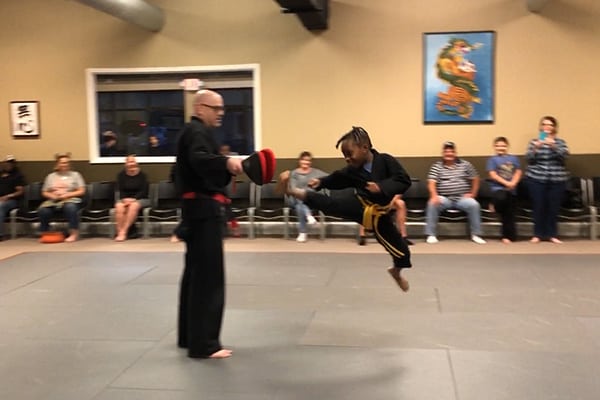Embarking on the journey to becoming a black belt is a rewarding and transformative experience. At the International Martial Arts Academy (IMAA), we believe that the path to black belt not only hones your physical skills but also cultivates discipline, perseverance, and mental fortitude. Whether you’re just starting or advancing through the ranks, this guide will provide you with valuable tips to help you progress through the different belt levels and achieve the coveted black belt.
Understanding the Belt System
Before diving into the tips, it’s important to understand the structure of the belt system at IMAA. Each belt represents a different level of proficiency and knowledge, and progressing through these levels requires dedication and consistent effort. Here’s a brief overview of the belt progression:
- White Belt – The beginning of your journey.
- Yellow Belt – Basic techniques and fundamentals.
- Orange Belt – Introduction to more complex movements.
- Green Belt – Developing intermediate skills.
- Blue Belt – Mastering intermediate techniques.
- Purple Belt – Advanced techniques and combinations.
- Brown Belt – Preparing for the transition to black belt.
- Black Belt – Mastery and the beginning of a deeper journey.
Tips for Progressing Through the Belts
1. Set Clear Goals
Setting clear, achievable goals is essential for your martial arts journey. Break down your long-term goal of becoming a black belt into smaller, manageable milestones. Focus on what you need to achieve at each belt level, such as mastering specific techniques or improving your physical conditioning. Setting goals keeps you motivated and provides a roadmap for your progress.
2. Consistent Practice
Consistency is key in martial arts training. Regular practice not only improves your skills but also helps build muscle memory. Attend classes regularly and practice at home to reinforce what you’ve learned. Even short, daily practice sessions can make a significant difference in your progress.
3. Pay Attention to Your Instructors
Your instructors at IMAA are experienced martial artists who provide invaluable guidance. Pay close attention to their feedback and instructions. Don’t hesitate to ask questions if you’re unsure about a technique or concept. Remember, they are there to help you succeed.
4. Focus on Technique
While strength and speed are important, mastering the correct technique is crucial. Focus on performing each movement accurately rather than quickly. Proper technique ensures that you’re executing moves safely and effectively, which is essential as you advance to higher belt levels.
5. Stay Physically Fit
Physical fitness plays a vital role in martial arts. Incorporate strength training, cardio, and flexibility exercises into your routine to enhance your overall performance. Being in good physical shape helps you execute techniques more efficiently and reduces the risk of injury.
6. Develop Mental Toughness
Martial arts training is as much about mental discipline as it is about physical skill. Develop a positive mindset and resilience. Overcoming challenges, whether they’re difficult techniques or personal setbacks, is a part of the journey. Mental toughness will help you push through tough training sessions and stay committed to your goals.
7. Respect the Martial Arts Culture
Respect and discipline are core values in martial arts. Show respect to your instructors, fellow students, and the dojo. Follow the etiquette and traditions of martial arts, such as bowing and addressing instructors properly. This respect extends beyond the dojo and is a fundamental aspect of becoming a black belt.
8. Track Your Progress
Keep a training journal to track your progress. Record the techniques you’ve learned, feedback from instructors, and your personal observations. Reviewing your journal regularly helps you identify areas for improvement and celebrate your achievements.
9. Participate in Competitions and Events
Participating in competitions and events can provide valuable experience and motivation. They offer an opportunity to test your skills against others and gain insights into your strengths and areas for improvement. Competitions also foster a sense of camaraderie and community within the martial arts world.
10. Stay Humble and Keep Learning
Even as you achieve higher belt levels, stay humble and open to learning. Martial arts is a lifelong journey of growth and self-improvement. Embrace the learning process, and remember that there is always more to learn, even after achieving your black belt.
The Journey to Black Belt
The journey to becoming a black belt at IMAA is a personal and unique experience. It requires dedication, perseverance, and a willingness to learn. By setting clear goals, practicing consistently, focusing on technique, and developing mental toughness, you can progress through the belt levels and achieve mastery in martial arts.
At IMAA, we are committed to supporting you every step of the way. Whether you’re a beginner or advancing to the next belt, our experienced instructors and supportive community are here to guide you. Embrace the journey, stay committed, and you will not only achieve your black belt but also discover the profound impact martial arts can have on your life.
Enroll Now!
At Innovative Martial Arts Academy, our Martial Arts training offers men, women, and children the opportunity to challenge their bodies and minds without the threat of injury and intimidation. Take on the best training in disciplines like Aikido, Kenpo Karate, and Kali, and build your skills one day at a time with the help of our dedicated instructors. Children ages 5-7 are encouraged to join our Young Dragons, and ages 3-5 are welcome in our Lil Ninjas program.
We are proud to serve families across Wake Forest, Wakefield and the surrounding area with a rewarding experience that can set you or your child up for success in all aspects of life. If you’re interested in learning about our martial arts program, contact us at 919.562.4663, or visit our website.
*Follow us on Instagram | Facebook
Want To Read More About Martial Arts?
Take a look at some of our other articles about martial arts and IMAA’s course offerings? Check out the following related blog articles:


